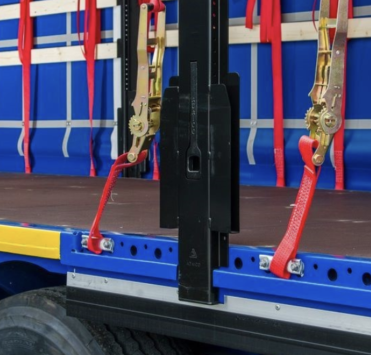Types of pallets: dimensions and classification

For foreign economic activities or production lines with high requirements, certified European or Finnish pallets meeting European standards are necessary.
The average weight of an unloaded pallet ranges from 15 to 21 kilograms, and most pallets can bear loads weighing more than 1000 kilograms.
Euro pallets are most commonly used for transportation in tarpaulin trucks and containers. Their standard sizes allow for maximum efficient use of cargo space and ensure the stability and safety of the cargo. American and Finnish pallets are also used but usually in cases where the specifics of the cargo or the direction of transportation require it.
Thus, the choice of pallet type depends on the geography of transportation, the specifics of the cargo, and customer requirements. Proper use of different types of pallets ensures the efficiency of logistics processes and the safety of goods at all stages of transportation.
Certified Euro Pallet (EUR-Pallet)
Dimensions: 800x1200x145 mm.
Construction:
- Top Part: Includes five alternating boards: wide (145 mm), narrow (100 mm), and so on.
- Bottom Part: Consists of three boards (narrow, wide, narrow) with beveled edges.
Markings:
- The corners must have bevels and the EUR brand mark in an oval, burned onto the right supporting legs of the pallet.
- Other legs have markings with the manufacturer's information (PKP, FS, DB, etc.), as well as series and year of production.
American Standard Pallet – 1200x1200 mm
Production Standards:
- Comply with the principles of the International Plant Protection Convention (ISPM15), allowing them to be used for international transport.
- Wood thicker than 6 mm undergoes mandatory heat treatment to prevent the spread of diseases and insects.
Certified Fin Pallet (FIN-Pallet, Finnish Pallet)
Dimensions: 1000x1200x145 mm.
Construction:
- Top Part: Consists of seven boards alternating in the pattern: wide (120 mm), two narrow (100 mm), wide, two narrow, wide.
- Bottom Part: Includes three boards (narrow, wide, narrow) with beveled edges.
Markings:
- The corners of the fin pallet must have bevels and the FIN mark in a rectangle, burned onto the right supporting legs of the pallet.
- Other legs have numerical information about the manufacturer and date of production.

Pallet Classification by Condition:
Top Grade:
- Virtually new, white, sturdy pallets.
- No chips or cracks.
- Used no more than three times.
First Grade:
- White, sturdy pallets.
- No chips or cracks.
- Have not undergone repairs.
Second Grade:
- Minor dirt and darkening of the wood are allowed.
- Small cracks and chips (no more than 3 cm wide and 30 cm long).
- Some may have been repaired.









